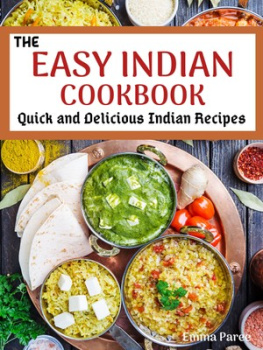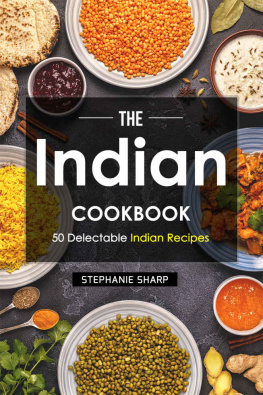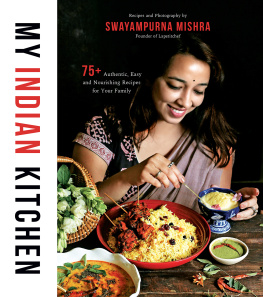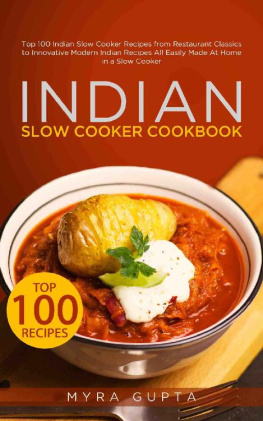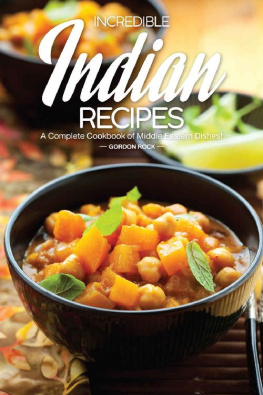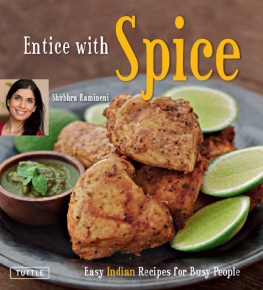

CONTENTS






THE CAF SPICE STORY
Far from the land of its birth and the influences that shaped it, Indian food is now a five billion dollar industry in the West and growing rapidly. Westerners exposure to Indian cuisine has come a long way since the early days of inexpensive curry houses. Since then, more professional Indians have settled overseas, and non-Indians have had the opportunity to travel to India and discover the authentic and diverse flavors of local foods.
Restaurants have become more upscale, and it is common now to find places specializing in regional cooking from, for example, Kerala or Chennai or Bombay. At the same time, Indian chefs with formal culinary training are developing their own styles of preparation using locally-available products and European-inspired methods. The new generation of Indian chef might even consciously avoid commonly known dishes such as Chicken Tikka Masala, Korma, Vindaloo, and Madras Curry, despite the fact that a huge number of diners still seek out those traditional restaurant dishes. I actually tried Tikka Masala and Madras Curry for the first time when I came to New York from India and had my first meal on Curry Hill on Lexington Ave. between 27th and 28th St.and it was an experience, to say the least! I had never eaten anything like that in India, and yet these are the most popular and best-known Indian dishes in America.
As a student at the Culinary Institute of America (CIA) in New York, I dreamed of changing the way Americans view Indian cuisine. Most Americans are intimidated, some are curious, and some are addicted to curry. But almost all non-Indians I meet are eager to explore further and learn more about our cuisine. Indian cuisine retains its exotic image today, and yet many people only know what they get in restaurants. I was eager to take up the challenge and be an ambassador who could make this cuisine more accessible to the average person. By simplifying a few processes and adding new creative twists to the classic recipes, I began publishing books with easy recipes that allow a home cook with a normal Western kitchen to recreate classic Indian dishes with all the flavor but none of the fear or fuss.
After graduating from the CIA and while working with different international food service companies, I began to envision a new business opportunityto develop a new Indian food brand created specifically for the American market. The interest in Indian cuisine was rapidly growing globally, and I could anticipate the natural progression towards demand for a range of food products that are Indian in flavor and design.
This is how I met the founder of Caf Spice, Sushil Malhotra. I remember vividly my first meeting with him at the Caf Spice bistro near New York University (NYU) in New York City. An elderly man, but with the passion and drive of a young entrepreneur, his energy impressed me. He reminded me of my father. At the threshold of a career in the food industry, I envisioned Indian food could eventually becoming mainstream and as popular as other ethnic cuisines such as Italian, Chinese, or Mexican. Here was a man who had exactly the same vision, many years before I was born! It amazed me how forward-thinking he was. That meeting is the main reason I am sitting down to write this book today. Not only are Malhotras my extended family in this country, but Sushils affection, warmth, and trust have been a key inspiration in my career.
Sushil and his wife Lata live in Westchester, NY. They have two daughters and a son. Sushil fondly calls me Beta (son in Hindi), and that makes me feel very special. I work closely with Lata, who helps me create new recipes for Caf Spice, along with their son Sameer Malhotra, who runs the operation. We work as friends with the shared goal of contributing to the success of the enterprise. This common purpose makes us all work that much harder, and we make a great team.


Sushils story is a classic entrepreneurs tale of passion, knowledge, and determination to overcome every hurdle and challenge to reach a desired goal. He is at the top of Americas Indian food business now, but his journey wasnt easy. He left India during the 1960s in an era of droughts, oil crisis, refugees, and a collapsing currency. Sushil managed to get a scholarship to study at City College in New York City, where he arrived in 1966, just 17 years old. He earned a degree in engineering and went to work for Shell and Disney, later earning an MBA from NYUs Stern School of Business.
Conditions in India during the following decade did not show any signs of improvement. Many of his family members also migrated to the Big Apple and together with his father, Sushil opened a small spice business that supplied South Asian spices and chutneys to New Yorks curry houses. The father-son duo opened a shop on Lexington Avenue and stored their spices in their Jackson Heights, Queens garage. Sushil used his weekends helping his father deliver chutney and spices to Indian restaurants in Manhattan and Queens.
In 1976, Sushil ditched engineering to become a full-time restaurateur. Indian cuisine in America had not yet changed much in the 70s. Sushil saw an opportunity, brought in a couple of investment partners, and opened his first Indian restaurant on Park Avenue. It was called Akbar and as a fine dining establishment was meant to represent India in its glory. Diners initially didnt take well to the concept; they found its doorman and the huge, black doors intimidating. But after a glorious review in the New York Times by food critic Craig Claiborne, customers poured through the black doors, and there was no looking back.
Nine years after opening Akbar, Sushil felt that it had peaked. He sold it and opened a new place called Dawat, with Madhur Jaffrey as chef and consultant. At the time, Jaffrey was called the Julia Child of Indian food. This second effort was an even bigger hit than Akbar. Its celebrity guest lists included Michael Jackson, Derek Jeter, Donald Trump, and Whitney Houston. I have heard many heart-warming stories from Jaffrey over dinner at the Malhotra residence, where she was a frequent guest. In fact, a recipe for Durupadi Jagtianiin in several of Madhur Jaffreys cookbooks is fondly named the Nani mom recipe, after Latas mother.
Later in the 90s, Sushil got out of fine dining and began opening casual bistros. The first Caf Spice opened its doors in Manhattan in 1995. Others soon followed in Philadelphia, Jersey City, and Gaithersburg, Maryland. The business model was to open close to college campuses, especially those with large foreign student populations. Although these establishments were very successful, the team closed them in 2010 to concentrate on quick-service restaurants and on supplying supermarkets and other retail outlets. Today, Caf Spice is a successful 30-million-dollar enterprise that is growing 20 percent a year in the booming Indian food market.
Next page


